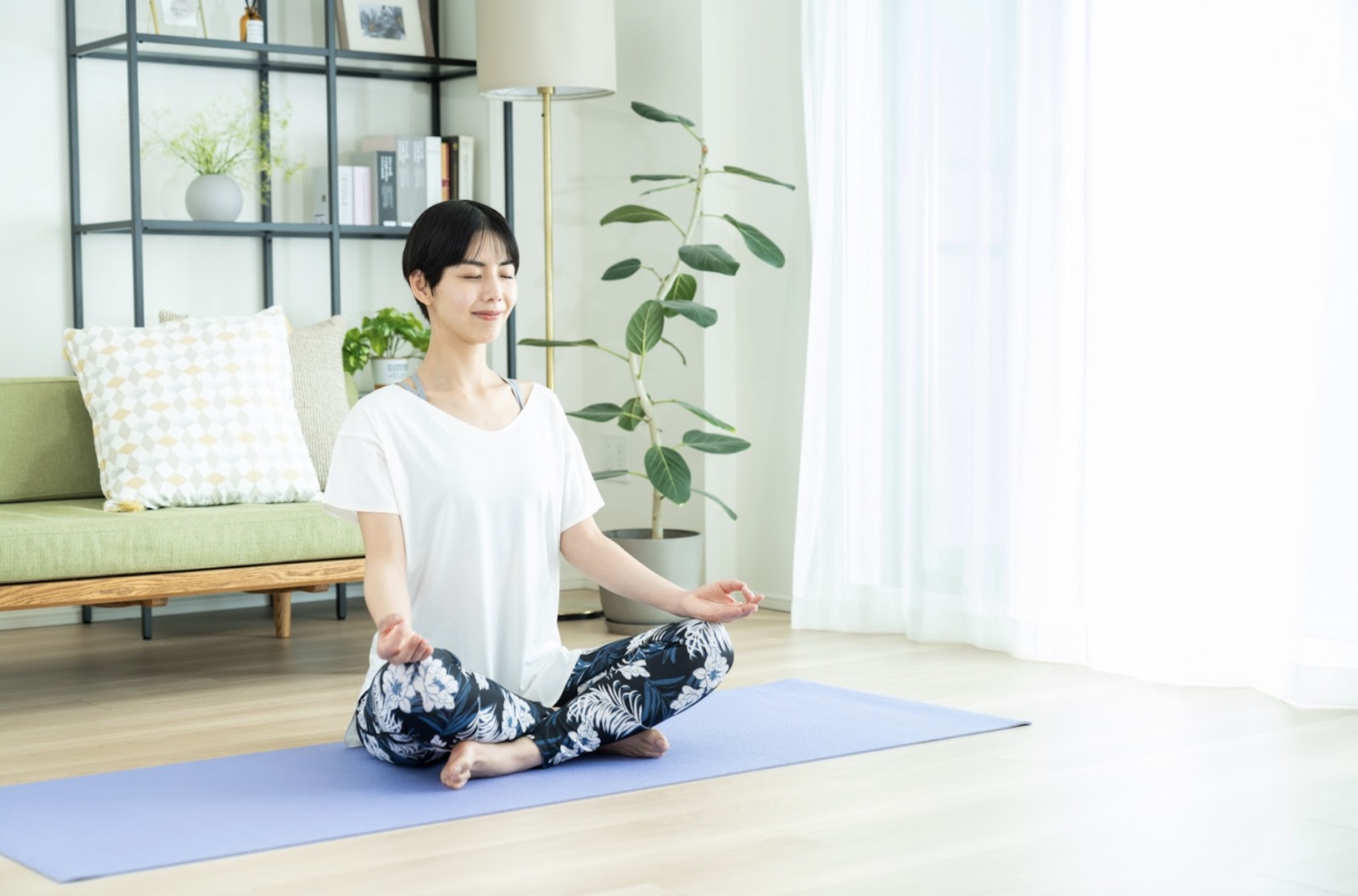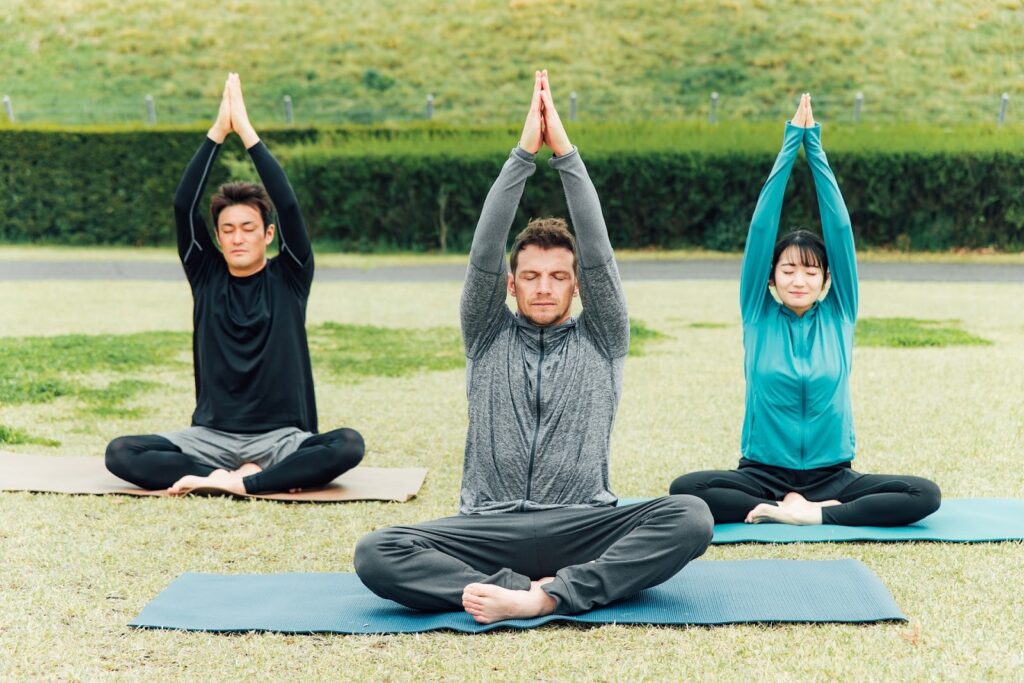10 Minute Meditation: A Gentle Practice for Modern Life

Quick Summary
10 minute meditation offers a simple way to pause, breathe, and return to presence. Even in busy lives, ten minutes can soften stress and open space for kindness and clarity.
- Short yet powerful: Ten minutes can shift the heart and mind
- Backed by research: Studies show small practices change the brain
- Practical in daily life: At work, home, or in a quiet corner
- Accessible to all: Beginners and experienced meditators alike
Introduction
When you sit with your phone, scrolling through messages or news, how does your body feel? Is the breath shallow? Is the mind restless?
Many of us believe peace requires long retreats or endless hours of silence. Yet peace is closer than we think. In just ten quiet minutes, we can return to ourselves. The breath is always here, waiting.
Meditation is not about escaping the world. It is about learning to meet the world with a steadier heart. Ten minutes may seem small, but in that space, compassion, patience, and wisdom begin to grow.
Why 10 Minute Meditation Matters

The mind, like a pond, needs stillness for the water to become clear. Neuroscience now shows what contemplatives have known for centuries: even short, regular practices reshape the brain in areas linked to memory, empathy, and stress regulation (Harvard Gazette – Eight weeks to a better brain).
Ten minutes each day is like watering a garden. Over time, seeds of awareness sprout. Stress lessens. Focus returns. Relationships feel lighter.
And yet, this is not about perfection. Some days the mind wanders. Some days the body feels impatient. That is also part of the path. With gentle repetition, the practice becomes less about control and more about friendship—with yourself, with life.
How to Begin a 10 Minute Meditation
Find a chair or cushion. Allow the body to rest. Close the eyes, or let them soften. Notice the breath as it rises and falls.
When thoughts appear, do not fight them. Simply notice and return to the breath.
Ten minutes is enough. Use a timer so you can let go of the clock. If you like, let a gentle voice guide you—through apps like Gassho, Headspace, or Insight Timer. Guidance helps when silence feels difficult.
The practice need not be separate from life. Before a meeting, during a commute, or at the edge of sleep, ten minutes can be woven into ordinary routines. As teacher James Clear reminds us, habit grows when linked to what we already do (Habit Stacking).
5 Minute Meditation vs. 10 Minute Meditation: A Reflection

Five minutes and ten minutes are both worthy. Each offers a doorway back to presence.
Five minutes is like taking a sip of cool water. It refreshes. It lowers the barrier to beginning. For a busy parent, student, or worker, five minutes is often what is possible.
Ten minutes is like sitting beside a flowing river. At first, the surface ripples with thoughts. But given a little more time, the deeper current of calm begins to appear.
Science supports both. Short mindfulness lowers stress, yet consistent ten-minute practices are more likely to shift attention and emotional tone (NIH resource).
So which is right? It depends on your life. Begin with five minutes if that is what you can give. Let it grow to ten when you are ready. Both are drops of kindness for the mind.
The Benefits of 10 Minute Meditation
Ten minutes can bring many gifts:
- Stress softens: The body relaxes, cortisol decreases
- Focus returns: The mind steadies, attention sharpens
- Sleep deepens: Quieting thoughts makes rest easier
- Emotions balance: Anxiety lessens, patience grows
In a study published in Psychiatry Research: Neuroimaging (Hölzel et al., 2011), participants who completed an eight-week Mindfulness-Based Stress Reduction (MBSR) program showed increases in gray matter concentration in several brain regions, including the hippocampus (linked to learning and memory), the posterior cingulate cortex, the temporo-parietal junction, and the cerebellum. These structural changes suggest that even an eight-week mindfulness practice can reshape areas of the brain related to learning, empathy, and stress regulation.
Common Challenges on the Path
- “I have no time.” Yet ten minutes is less than 1% of a day. Could one scroll on social media be replaced with stillness?
- “My mind races.” That is normal. The mind thinks, just as the heart beats. Meditation is not to erase thoughts, but to notice them with kindness.
- “It feels boring.” Then explore different anchors: gratitude, body awareness, or sound.
- “I forget.” A small reminder, a note by the bed, a gentle alarm—these can help.
Challenges are not obstacles. They are teachers. Each difficulty invites patience, humility, and compassion.
Real Stories from Practitioners

One office worker shared, “Since I started using my lunch break for a 10-minute meditation, my afternoon stress has eased and my focus at work has returned.” Even if it feels difficult to meditate at the desk, finding a quiet spot nearby—like a break room, a parked car, or a bench outside—offers a chance to reset with mindful breathing.
A mother explained, “After putting my child to bed, I lie down and take ten minutes for meditation. It melts away the day’s fatigue and anxiety, and I wake up calmer the next morning.” Short practice has helped her manage parenting stress and even improved her sleep quality.
A university student struggling with insomnia reported, “By practicing ten minutes of meditation at night, my thoughts settle, and I fall asleep more easily.” The practice not only supports better sleep but also restores focus and reduces daily stress.
An athlete testified, “Before competition, a 10-minute mindfulness meditation eases my nerves and allows me to concentrate fully on performance.” For many athletes, brief practice translates directly into greater consistency and composure.
The benefits are not always dramatic. Yet, like drops of water smoothing a stone, the steady rhythm of daily ten-minute meditation softens stress, improves sleep, restores focus, and calms anxiety—shaping life into something gentler, day by day.
Conclusion
Ten minutes may seem small, yet within it lies great power. When we pause, breathe, and notice, life changes. Stress softens. Compassion grows. The mind remembers its clarity.
You do not need a mountain retreat to find peace. You only need to sit quietly, for a few minutes, and return to the breath. Apps like Gassho can help guide, but the deepest teacher is always within you.
Peace does not wait for the future. It begins now—in this breath, in this moment.
Frequently Asked Questions
FAQ 1: Can 10 minute meditation really reduce stress?
Answer: Yes. When we pause, breathe, and return to the body, the nervous system softens. Many people feel calmer even after a short session. What matters is gentle repetition.
Real Results: The American Psychological Association reports that even brief mindfulness practices can lower anxiety and stress symptoms.
Takeaway: Ten minutes can be a soft refuge from daily stress.
FAQ 2: Is 10 minute meditation enough for beginners?
Answer: Yes. For those starting out, short practice feels welcoming and less overwhelming. Over time, it may grow naturally.
Real Results: Many beginners find that starting with ten minutes helps build confidence and later expand to longer sessions, as described in various mindfulness training programs.
Takeaway: Small steps open the path to deeper stillness.
FAQ 3: Can 10 minute meditation improve sleep?
Answer: Yes. Sitting quietly before bed helps calm racing thoughts. The body receives a signal to rest.
Real Results: The Sleep Foundation notes that mindfulness and meditation before bedtime improve sleep quality and reduce insomnia symptoms.
Takeaway: A few minutes of stillness can invite gentle sleep.
FAQ 4: Do I need special equipment for 10 minute meditation?
Answer: No. Breath and presence are always with you. A chair, a cushion, or even a park bench can become a meditation seat.
Real Results: Harvard Health notes that taking just a few quiet minutes in daily life is enough to practice mindfulness. No special equipment or setting is required.
Takeaway: Peace requires no tools—only willingness.
FAQ 5: Can 10 minute meditation increase focus at work?
Answer: Yes. When the mind pauses, attention refreshes. Returning to tasks becomes easier.
Real Results: A University of Washington study found employees practicing mindfulness had stronger focus and memory in multitasking tasks.
Takeaway: Ten minutes can restore clarity at work.
FAQ 6: Is 10 minute meditation helpful for children?
Answer: Yes. Children also benefit from small pauses. It helps them focus and feel calmer.
Real Results: Research on MindUP programs shows improved classroom behavior and focus among children practicing mindfulness.
Takeaway: Stillness is a gift for all ages.
FAQ 7: Can I use an app like Gassho for 10 minute meditation?
Answer: Yes. A gentle guide can be supportive, especially when silence feels difficult. Gassho is one way to bring this support into daily life.
Real Results: Randomized controlled trials show app-based mindfulness tools like Headspace or Calm improve well-being and sleep quality.
Takeaway: Technology can guide us back to presence, when used wisely.
FAQ 8: Is 10 minute meditation better in the morning or night?
Answer: Both times carry gifts. Morning brings intention. Evening brings release. The best time is the one you will return to with ease.
Real Results: The NCCIH notes that mindfulness reduces perceived stress regardless of the time of day, supporting both morning and evening practice.
Takeaway: The right time is the one that nourishes you.
FAQ 9: Can I meditate at work for ten minutes?
Answer: Yes. Even in an office, ten minutes of stillness restores energy. A break becomes a moment of renewal.
Real Results: A randomized controlled trial showed that workplace mindfulness programs reduced stress and improved employee well-being.
Takeaway: A quiet pause at work brings fresh strength.
FAQ 10: Does 10 minute meditation help with anxiety?
Answer: Yes. Mindfulness softens the mind’s tendency to spiral. Anxiety lessens when met with breath and patience.
Real Results: A JAMA Network Open study found mindfulness-based stress reduction was as effective as escitalopram in treating anxiety disorders.
Takeaway: Ten minutes of kindness toward yourself can ease worry.
FAQ 11: Is 10 minute meditation a replacement for longer sessions?
Answer: Not necessarily. Longer sessions deepen practice. But short daily sessions create strong roots. Better ten minutes each day than one hour once a month.
Real Results: A systematic review in JAMA Internal Medicine concluded that consistent practice, even in shorter sessions, supports lasting benefits.
Takeaway: Consistency matters more than length.
FAQ 12: Can 10 minute meditation help athletes?
Answer: Yes. Athletes use short mindfulness to calm nerves and focus the mind. It supports both body and spirit.
Real Results: Reviews in Frontiers in Psychology show mindfulness improves performance and mental health in athletes.
Takeaway: Calm mind, strong body.
FAQ 13: Will I notice results immediately?
Answer: Some feel calm in the first session. Others notice change slowly. The fruits grow with patience.
Real Results: A Harvard study showed measurable brain changes after just eight weeks of mindfulness practice.
Takeaway: Do not hurry. Let stillness bloom in its time.
FAQ 14: Can 10 minute meditation help with eating habits?
Answer: Yes. Mindfulness reduces impulsive eating. It helps bring awareness to hunger and fullness.
Real Results: A systematic review links mindfulness-based interventions with reductions in binge eating and improved eating habits.
Takeaway: Awareness nourishes wise choices.
FAQ 15: Is breathing the only focus in 10 minute meditation?
Answer: No. Sound, body sensations, or loving-kindness can also guide the practice. Breath is simply always available.
Real Results: Many practitioners report that rotating anchors—such as breath, sound, or body—enhances consistency (APA overview).
Takeaway: What matters is returning, not what you return to.
FAQ 16: Can I meditate lying down?
Answer: Yes, but you may fall asleep. Lying down is good before rest. Sitting is better for alertness.
Real Results: Harvard Health notes lying-down meditation before bed helps fight insomnia and improve sleep.
Takeaway: Choose posture with care for your purpose.
FAQ 17: Is 10 minute meditation supportive for depression?
Answer: Yes, but it is not a cure. It can reduce rumination and bring gentle awareness. Always combine with professional support if needed.
Real Results: A meta-analysis in JAMA Internal Medicine confirmed mindfulness reduces relapse risk in depression.
Takeaway: Meditation is a companion, not a replacement for care.
FAQ 18: Can I combine 10 minute meditation with yoga?
Answer: Yes. Movement softens the body. Stillness deepens the heart. Together, they bring balance.
Real Results: The NCCIH notes that combining yoga and meditation often enhances stress reduction.
Takeaway: Breath and body walk hand in hand.
FAQ 19: How do I know if I am doing it right?
Answer: If you sit, breathe, and return when distracted, you are practicing. There is no perfection—only presence.
Real Results: The APA emphasizes that awareness itself is the practice, regardless of distractions.
Takeaway: Doing it is being it.
FAQ 20: Can 10 minute meditation replace therapy?
Answer: No. It is a support, not a substitute. Professional care is essential when suffering is deep.
Real Results: Reviews in JAMA Internal Medicine recommend mindfulness as a complement, not a replacement, for therapy.
Takeaway: Meditation is one tool among many on the path of healing.
Related Articles
- Harvard Health – “A pill-free way to treat anxiety” (2022)
Overview of research showing that mindfulness practices, including breathing, can significantly reduce anxiety. - Mayo Clinic – “Meditation to reduce stress”
Simple guide on how meditation reduces stress and supports overall well-being. - American Psychological Association – Mindfulness Meditation
Detailed explanation of how mindful breathing changes brain function and reduces psychological stress. - 5-Minute Mindfulness Meditation with GASSHO: A Simple Guide
A gentle introduction to the basics of mindfulness, with a simple 5-minute meditation guide that anyone can practice. Practical tips for regaining stillness in the midst of a busy day. - Mindful Parenting: Overcome Frustration and Enjoy the Moment
A personal story of practicing “informal mindfulness” in everyday parenting. Introduces an easy 5-minute meditation that helps ease frustration and makes time with children more joyful.
